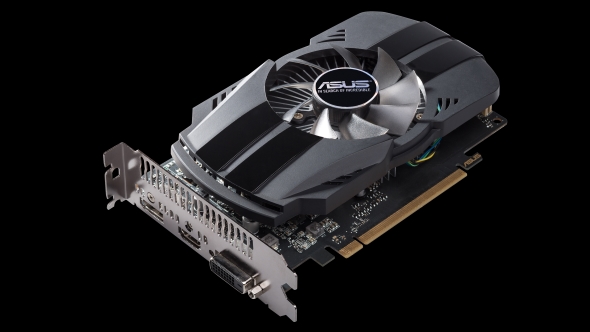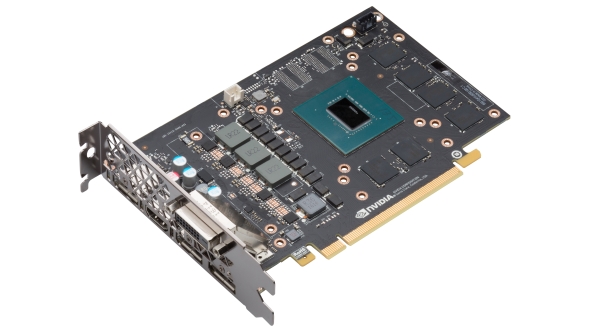Nvidia officially released the new GTX 1050 Ti and GTX 1050 graphics cards, confirming the launch of the first genuinely mainstream Pascal GPUs. Affordable 1080p gaming for the win, eh?
Want a definitive score? Here’s our GTX 1050 Ti review.
So far Nvidia’s Pascal range of graphics cards haven’t just raised the bar for gaming performance they’ve also pushed the price of GPUs up pretty considerably. For each position on the graphics card totem pole the price point has shifted upwards. The GTX 1080 is the price of last gen’s 980 Ti, the GTX 1070 is around the same as the GTX 980 and the GTX 1060 looks to be aping the GTX 970.
But the GTX 1050 Ti and GTX 1050 are Nvidia’s first mainstream offerings for the Pascal generation and with the MSRP looking pretty tasty (at least in the US), we’re guessing they’re going to do pretty well.
Nvidia GTX 1050 Ti and GTX 1050 release date

The launch rumours were close, but no-one nailed the exact official release date Nvidia have just announced. Both the GTX 1050 Ti and GTX 1050 launched on the same day, Tuesday October 25, 2016. The straight GTX 1050 though is only a paper launch right now, with the actual silicon only likely to appear on the shelves sometime around the first week or so of November.
There aren’t going to be any Founders Editions or reference versions for either the GTX 1050 Ti or GTX 1050. On the one hand that means the pricing isn’t quite so offensive as some of the other Pascal cards, but also means that that diminutive Nvidia shroud they’ve shown off in some of the press materials is only a render and will never see the light of day. That’s a real shame because that half-pint cooler design looks real cute.
Nvidia GTX 1050 and GTX 1050 Ti price

The final MSRP for both the GTX 1050 and GTX 1050 Ti is actually a little lower than we were expecting. And that’s not something which normally happens, but then that could be a hangover from the somewhat extreme pricing Nvidia have dropped on the rest of the Pascal range of cards.
The GTX 1050 Ti is retailing for $139 (£139) with the straight GTX 1050 starting at just $109 (£115). With no reference cards being made though real pricing is going to stretch upwards from there, with a whole host of factory-overclocked cards likely to dominate the etailers from the outset.
AMD are reportedly dropping the price of the Radeon RX 470 to compete with Nvidia’s new push into the mainstream market the red team have made their own in this generation. Though we’ve yet to see any downward movement on RX 470 pricing, but if the prices for the GTX 1050 Ti and RX 470 do squeeze closer together the second-tier AMD Polaris card should get the nod.
Nvidia GTX 1050 and GTX 1050 Ti specs

The official specs for both the GTX 1050 and GTX 1050 Ti match the previous rumours we reported, with the higher-spec Ti card using an extra streaming microprocessor (SM) module in its version of the new GP107 silicon.
The GTX 1050 Ti sports 768 CUDA cores across six SMs, with 48 texture units and an impressive 32 render output units (ROPs). The other key spec is the memory configuration of 4GB of GDDR5 running a 7Gbps across a 128-bit memory bus. The GTX 1050, on the other hand, comes with just five SMs and 640 CUDA cores, 40 texture units and the same 32 ROPs. It’s also running with less memory – just 2GB of GDDR5, but still runs it at 7Gbps.
Both cards though run at the same 75W TDP meaning that neither needs to have additional PCIe power connectors in order to run, just taking all the juice they need from the motherboard connection itself. There will, of course, be those factory-overclocked options which do add in a 6-pin PCIe connection to boost the potential overclocking performance, but I still feel that kinda misses the point of these lower-end cards.
Being able to drop a bus-powered GPU into any ol’ PC opens up PC gaming to a whole new tier of players. It makes it the easiest and most beneficial upgrade you can make to a bog-standard office desktop, allowing you to turn a basic PC into gaming rig capable of delivering 60fps in the latest games at decent 1080p settings. And all for less than $150. That makes it quite the upgrade.
The final interesting part of the picture is where the actual GP107 chips have been manufactured. Instead of using the same TSMC 16nm FinFET lithography Nvidia chose for the rest of the Pascal range, the GTX 1050 Ti and GTX 1050 are being manufactured by Samsung on their 14nm FinFET process. That levels up the lithography numbers with AMD, putting them both on 14nm FinFET transistors, but whether there is really that much difference between 16nm and 14nm we’re not too sure.
Nvidia have redesigned the graphics processing clusters (GPCs) for the new GP107 GPU. Instead of the now-standard five streaming microprocessors (SMs) per GPC, the GTX 1050 cards are using a GPC with only three SMs per cluster. For the two new cards then there are a pair of GPCs arrayed around the central graphics logic – for the GTX 1050 Ti that means the full six SMs and for the GTX 1050 there will be only five.
Nvidia GTX 1050 and GTX 1050 Ti performance

A post on Chiphell, since removed, showed some 3DMark numbers for the unreleased GPU, but you can still catch the original images over atSweclockers.They show a card which sits between AMD’s Radeon RX 460 and RX 470 GPUs in the performance stakes. Interestingly the result also puts it ahead of the GTX 960 from the Maxwell generation, if only by a few hundred marks.
What the 3DMark images don’t show, however, is what speed the tested card is running at. The Sweclockers post suggested the GTX 1050 Ti is capable of overclocking up to around 1,771 – 1,787MHz, so there is the chance the score came from an overlocked, rather than stock-clocked, version of the card. Our MSI version though will go well over 1,800MHz without needing any extra PCIe power connections to get there. Though that does seem to limit the GPU overclocking somewhat.
It might be a lot to hope for the GTX 1050 Ti to be able to deliver GTX 970 levels of gaming performance, but with the GTX 1060 able to almost produce frame rate parity with the GTX 980 it wouldn’t have been beyond the realms of possibility…were the GTX 1050 cards not likely to be running a very logic-light version of the Pascal architecture.
With its core configuration the GTX 1050 Ti outperforms the RX 460, but is fairly significantly behind the GTX 1060, even in 3GB form. Our overclocked MSI GTX 1050 4G OC card is able to outperform the GTX 960 but falls well short of the performance AMD’s RX 470 is capable of producing. If that card gets a serious price cut it could do well, as could a cheaper card based on a cut-down Polaris 10 GPU, but right now the cheaper GTX 1050 Ti is the go-to budget GPU.
